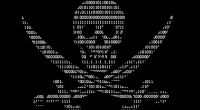NASA and its exploits on Mars are reaching a critical point, as the space agency prepares for the first ever powered, controlled flight on another planet. That’s right, the Ingenuity helicopter that made its way to our red neighbor along with the Perseverance rover is ready to take flight on Mars. Or so we thought. Turns out, NASA needs some more time to fix some issues with the chopper, and thus, the mission has been rescheduled for 14th April.
Earlier, after Ingenuity completed its first night-out on Mars after separating from the Perseverance rover, NASA celebrated the history defining moment, and said that it would attempt to fly the helicopter on April 11. However, as the space agency was preparing the chopper for take off before the deadline, some issues surfaced which caused it to postpone the flight.
“The helicopter team is reviewing telemetry to diagnose and understand the issue,” NASA said in a statement. “Following that, they will reschedule the full-speed test.”
Nonetheless, the American space agency says that Ingenuity is safe and healthy, and is sending data back to Earth.
The mission is being compared to the first ever controlled flight on Earth-the plane flown by Wright Brothers, and to commemorate that, a piece of fabric from that plane has been tucked inside Ingenuity.
During this mission (which will see the chopper hover for over 30 seconds in the Martian atmosphere), Ingenuity will click black and white pictures of the Martian surface, providing invaluable data to scientists here on Earth. While the mission is supposed to be highly dangerous, NASA believes that the risk is worth the reward, and is excited to conduct the mission.
If successful, this flight will be followed by an attempt to capture another picture (this time colored) of Mars’ horizon. After that, NASA wants to conduct multiple launches over the next month to extract as much data from the chopper as possible.
The problem with this seemingly brilliant game plan is that Mars has a very bleak atmosphere (less than one percent of the pressure of Earth’s atmosphere). This means that there isn’t nearly enough air to push down on the surface of the planet to generate lift-off pressure. However, since Mars is much smaller than Earth, it also has less gravity, which means that there is less force pulling the chopper down. Nonetheless, a controlled flight on Mars is no menial task, and NASA is making sure that all the conditions are in its favor.
The Tech Portal is published by Blue Box Media Private Limited. Our investors have no influence over our reporting. Read our full Ownership and Funding Disclosure →






